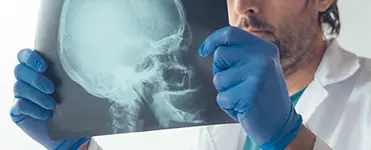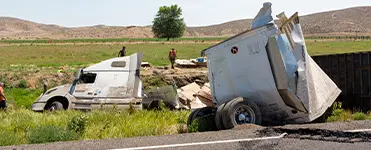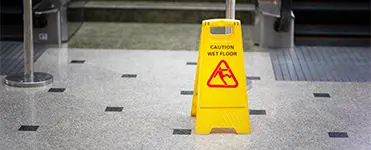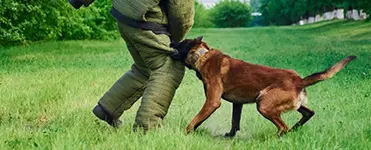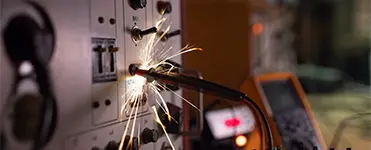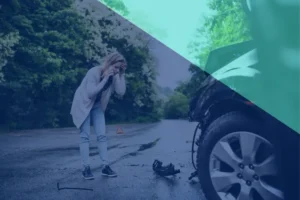Navigating the intricate landscape of personal injury law in California demands the comprehensive understanding of all the elements that contribute to a successful claim. Among these crucial components, “proximate cause” stands as a pivotal aspect in determining liability, which is the starting point to begin unraveling the thread that ties an injury to the responsible party’s actions or negligence.
California’s legal framework places significant emphasis on the concept of proximate causation, recognizing its role in shaping the outcome of personal injury claims, which is why a nuanced comprehension of proximate cause becomes imperative.
In today’s blog, we aim to highlight the nuanced aspects of proximate cause within California personal injury cases. From its principles to certain legal precedents, we will explore the significance of establishing proximate causation and its impact on determining liability. We’ll also touch upon key considerations and potential challenges that make finding the right legal representation so critical for a successful claim. In particular, we will discuss:
- Defining proximate cause in California law
- How to establish proximate cause in a personal injury case
- Important cases where proximate cause was critical
Defining Proximate Cause in California Law
In California law, proximate cause is the legal concept that establishes a direct connection between a party’s actions or negligence and the resulting injury or damage suffered by a victim. It’s a substantial factor in personal injury cases, playing a pivotal role in determining liability and attributing legal responsibility to the party whose actions were the primary cause of the harm.
The Proximate Cause Doctrine encompasses the idea that not every action or event leading to an injury can be considered legally responsible. Instead, it focuses on identifying the immediate and foreseeable cause that set in motion a chain of events culminating in the personal injury accident.
This concept acknowledges that while a person may have engaged in negligent behavior, liability is limited to the reasonably foreseeable consequences of that conduct.
Here are several ways in which proximate cause can affect a personal injury claim in the state:
- Establishing Liability: Proximate cause is essential for establishing liability. To succeed in a personal injury claim, the plaintiff must demonstrate that the defendant’s actions or negligence were the proximate cause of the injuries. If the plaintiff can establish a clear and direct connection between a series of events and the harm suffered, it strengthens their case for liability.
- Foreseeability and Negligence: Proximate cause is closely tied to foreseeability. If the harm suffered by the plaintiff was reasonably foreseeable as a result of the defendant’s actions, it strengthens the argument for negligence. Demonstrating that the defendant should have anticipated the potential consequences of their conduct is a key aspect of proving proximate cause.
- Scope of Liability: Proximate cause helps define the scope of the defendant’s liability. It establishes the boundaries of legal responsibility by focusing on the immediate and foreseeable consequences of the defendant’s actions. If the plaintiff can show that the harm falls within the scope of what a reasonable person would anticipate, it supports a broader liability for the defendant.
- Intervening Causes: Proximate cause considerations include assessing whether there are intervening causes that break the chain of causation. If an unforeseeable event occurs after the defendant’s actions and is deemed the primary cause of the injury, it may impact the determination of proximate cause and, consequently, the defendant’s liability.
- Determining Damages: Proximate cause is integral to calculating damages. It helps establish the causal link between the defendant’s actions and the specific injuries suffered by the plaintiff. The more direct and proximate the cause, the more likely it is that the plaintiff can recover damages for the harm sustained.
- Legal Precedents: Proximate cause is often analyzed in light of legal precedents. Past cases and established principles guide the courts in determining how proximate cause should be applied in various circumstances. Understanding these precedents and presenting them effectively can influence the court’s interpretation of proximate cause in a current case.
In short, proximate cause in California law focuses on establishing a direct link between a party’s actions or negligence and a resulting injury. It serves as a crucial element that helps assign responsibility and guide a claim on liability.
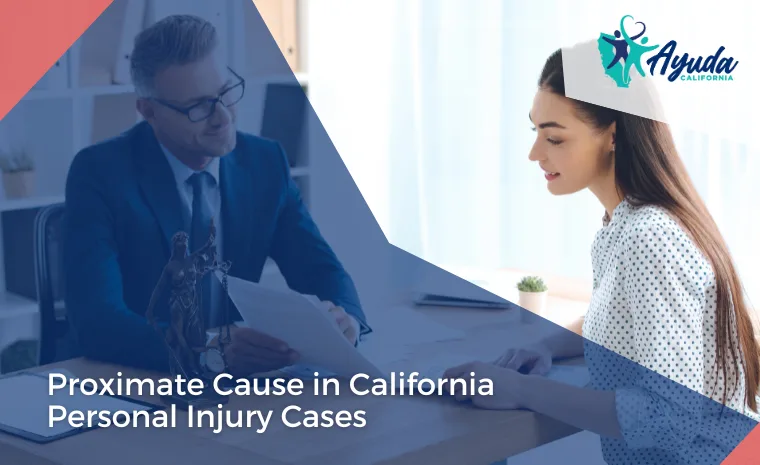
How to Establish Proximate Cause in a Personal Injury Case
Establishing proximate cause in a California personal injury claim is a meticulous process that involves demonstrating a direct and foreseeable connection between someone’s negligence and the resulting harm. Here are key steps a personal injury lawyer has to navigate to ensure a positive outcome for your case:
Causation Analysis
An experienced attorney conducts a thorough analysis of the causation chain, identifying the specific actions or omissions that directly led to the injury. This analysis should establish a clear sequence of events linking a person’s conduct, negligence or breach of duty to the harm suffered by the victim.
Foreseeability Assessment
The foreseeability of the harm is not a trivial factor and it should be emphasized. The attorney needs to show that a reasonable person, under similar circumstances, would have anticipated the potential consequences of their actions. This involves presenting evidence that the injury was a foreseeable result of the negligent conduct.
Expert Testimony
In complex cases, experts can provide professional opinions on the causal relationship between the defendant’s actions and the injury. Their expertise can bolster your case argument and enhance the court’s understanding of the technical aspects involved.
Documentation and Evidence
Compiling strong documentation and evidence of the injured party is critical. This may include medical records, accident reports, eyewitness accounts, and any other relevant materials that establish a clear connection between the defendant’s conduct and the injury sustained by the plaintiff. Thorough documentation enhances the persuasiveness of your case.
Addressing Superseding Causes
Getting legal advice is critical due to the need to anticipate and address potential superseding causes. If there are intervening events or actions that could be argued as breaking the chain of direct causation, your attorney could demonstrate that these factors were not the primary cause of the injury. This involves presenting evidence that the party at fault’s conduct remained a substantial factor in causing injury.
Legal Precedents
Reference relevant legal precedents and case law is also helpful. Your lawyer can show how similar cases have been decided in favor of proximate cause, reinforcing the legal principles that support your case.
By meticulously following these steps and presenting a comprehensive case, a personal injury attorney can enhance your chances of using the Proximate Cause Doctrine under California law and get you the compensation you deserve. Remember that legal guidance from experienced professionals can further strengthen your approach and navigate the complexities of the legal process.
Case Studies on Proximate Cause in California
1. Schrimscher v. Bryson, 1976
The case:
In this case, the victim, a CHP Officer, initiated a personal injury lawsuit against a drunk driver who caused a collision on the highway, where the officer was severely injured.
The facts:
Thomas Bryson, driving under the influence, caused a collision on Interstate 405. A California Highway Patrol officer, Ronnie Schrimscher, arrived at the scene, arrested Bryson, and directed him to move his damaged vehicle off the freeway.
While Schrimscher was calling for a tow truck, another intoxicated driver collided with Bryson’s car, injuring the officer severely. The argument of Schrimscher’s attorney held that Bryson’s caused the collision by deciding to drive under the influence on a highway, and the necessity of calling a tow truck to impound his car was the direct cause of the second crash that caused the police officer’s injuries.
The decision:
The court concluded that the second collision, caused by the intervening act of a second driver, broke the chain of causation from the defendant’s original negligence. The court held that the foreseeability of the second collision was low and ruled in favor of Bryson, stating that liability cannot be imposed for injuries resulting from an intervening unrelated cause.
Furthermore, Officer Schrimscher’s duty to investigate the accident did not involve a rescue situation, and Bryson was not held liable for the officer’s injuries.
2. Mitchell v. Gonzales, 1991
The case:
James and Joyce Mitchell, the parents of 12-year-old Damechie Mitchell, who drowned in Lake Gregory on July 4, 1985, sued Jose L. Gonzales, Matilde Gonzales, and Mrs. Gonzales’s son Luis for damages, claiming their negligence caused Damechie’s death.
The facts:
Damechie, a 12-year-old non-swimmer, joined his friend Luis for a Fourth of July outing at Lake Gregory with the Gonzales family. Despite Mrs. Mitchell’s warning about Damechie’s inability to swim, the children rented paddleboards, affirming their swimming abilities to the rental employee. They stayed close to shore in shallow waters, however, after lunch, they rented another paddleboard and ventured farther into the lake.
At some point, the paddleboard tipped over and Damechie went underwater. Despite a quiet period, none of the children signaled for help. Luis finally called a lifeguard, but Damechie’s body was found days later. The Mitchells, Damechie’s family, filed a lawsuit against the Gonzales, alleging that their negligence resulted in the wrongful death of their son.
The decision:
The jury, through a special verdict, determined that the defendants were negligent but not the cause of Damechie’s death. The trial court rejected the Mitchells’ motions for a new trial or judgment notwithstanding the verdict. For that reason, the jury did not reach a special verdict on comparative negligence.
Need Assistance? Reach Out to Ayuda California Today!
Experiencing an accident can result in emotional distress, and during such challenging times, individuals and their families often grapple with the financial, physical, and emotional burdens that follow. Pursuing justice after an accident can be daunting, and seeking the maximum compensation to get over these challenges becomes a main priority.
At Ayuda California, our dedicated legal team is here to provide unwavering support. We understand the complexities of personal injury claims and Proximate Cause Doctrine to determine any liability. We are committed to guiding you through the legal process, offering the assistance you need to seek justice and obtain the maximum compensation you deserve.
Our commitment to justice means that you can rely on us to navigate the intricacies of your case. Whether you’re dealing with injuries, emotional distress, or financial setbacks, we are prepared to stand by your side. Reach out to our helpline today at (844) 865-0721.



